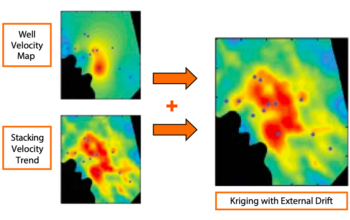The retail industry has always been highly competitive, and in recent years, it has become even more challenging to stand out in a crowded marketplace. With the rise of e-commerce and the abundance of choices available to consumers, retailers must find new ways to differentiate themselves and drive growth. One of the most effective ways to do this is through the use of point-of-sale (POS) analytics.
POS analytics is the process of analysing data from a retailer’s POS system to gain insights into customer behaviour, sales trends, and inventory management. Through leveraging this data, retailers can make informed decisions that drive business growth.
Here are some of the ways that POS analytics can help retailers achieve this:
-
Understanding Customer Behaviour
One of the most significant benefits of reliable Pos system analytics is that it provides retailers with a better understanding of their customers. By analysing data such as purchase history, buying patterns, and demographics, retailers can gain insights into what their customers want and need. This information can be used to create targeted marketing campaigns, improve customer service, and enhance the overall shopping experience.
For example, if a retailer notices that a particular customer consistently buys a certain product, they can use this information to create personalised promotions or recommend complementary products. This not only improves the customer experience but also increases the likelihood of repeat business.
-
Optimising Inventory Management
Inventory management can be improved with the use of POS analytics. Retailers can determine which products are selling well and which are not by analysing sales data. Making informed judgments about inventory levels, product placement, and pricing is possible with this information.
For example, a merchant may lower the inventory level or transfer a product to a different area of the shop if they see that it is not selling well. On the other hand, if a product is doing well, they can raise their inventory level to guarantee that there is always a supply.
-
Improving Sales Performance
Additionally, POS information can be used to boost sales success. Retailers can find trends and patterns that can be used to optimise their sales tactics by analysing sales data.
For example, if a merchant finds that particular products sell better at particular periods of the year, they might modify their marketing and promotional methods accordingly.
Similarly, if they notice that certain sales associates are consistently outperforming others, they can use this information to identify best practices and share them with the rest of the team. This not only improves sales performance but also creates a culture of continuous improvement.
-
Enhancing Customer Service
Finally, POS analytics can be used to enhance customer service. By analysing data such as customer feedback and purchase history, retailers can gain insights into what their customers want and need. This information can be used to improve customer service and create a more personalised shopping experience.
For example, if a retailer notices that customers are consistently complaining about a particular aspect of the shopping experience, they can use this information to make improvements.
Similar to this, a salesperson can leverage a customer’s past purchases of a certain product to make personalised recommendations and improve the entire buying experience.
Practices for Using POS Analytics
It is important to note that implementing a POS analytics strategy requires more than just collecting data. Retailers need to have the right tools and processes in place to effectively analyse and act on the data.
Here are some best practices for leveraging POS analytics to drive business growth:
-
Choose the Right POS System
The first step in leveraging POS analytics is to choose a reliable Pos system. Retailers should look for a system that allows them to easily collect and analyse data, and that integrates with other systems such as inventory management and customer relationship management (CRM) software.
-
Define Key Performance Indicators (KPIs)
Retailers should establish key performance indicators (KPIs) that support their corporate objectives once a POS system is in place. These KPIs should contain figures like sales per square foot, average transaction value, and client retention rate. They should also be measurable and actionable.
-
Analyse Data Regularly
Retailers should analyse POS data regularly to identify trends and patterns that can be used to make informed decisions. This analysis should include both quantitative data (such as sales figures) and qualitative data (such as customer feedback).
-
Use Data to Make Informed Decisions
Finally, retailers should use POS data to make informed decisions that drive business growth. This may include adjusting inventory levels, optimising sales strategies, or improving customer service.
In conclusion, POS analytics is a powerful tool that can help retailers differentiate themselves in a crowded marketplace and drive business growth. By understanding customer behaviour, optimising inventory management, improving sales performance, and enhancing customer service, retailers can make informed decisions that set them apart from the competition.
Implementing a POS analytics strategy requires more than just collecting data – it requires the right tools, processes, and mindset to effectively analyse and act on the data.




